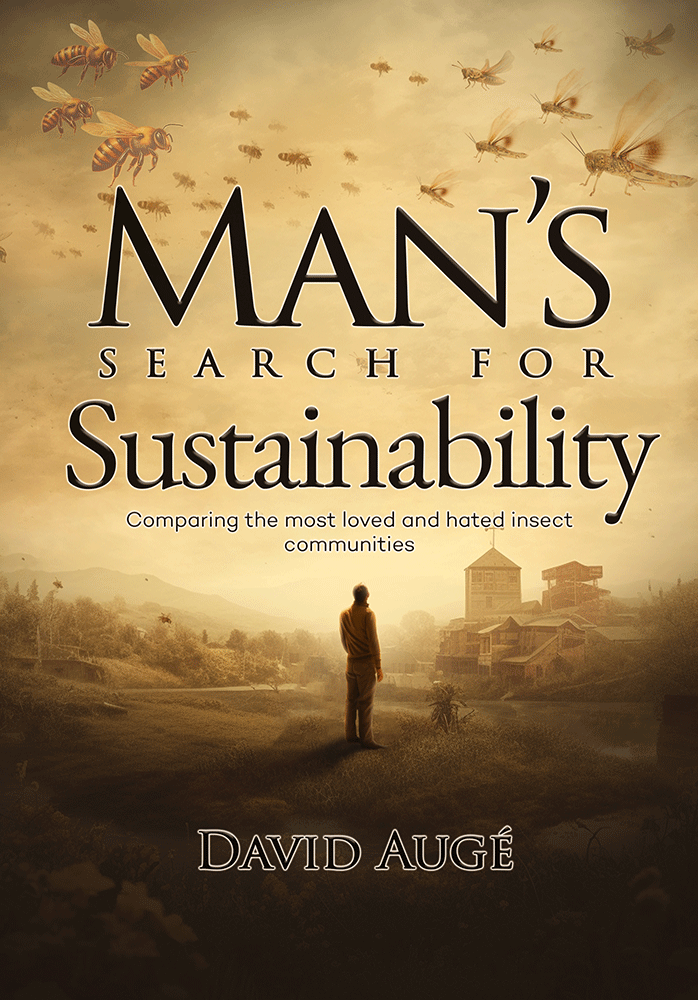about
the book
“Man’s Search for Sustainability” by author David Auge ranks among the best environmental books of all time that sheds light on the most pivotal matters. For example, How humanity hopes to address sustainability goals frequently focuses on dramatic technological advances that will harness the evolving systems to collect energy. We look to the energy of the sun and the attempt to capture the tidal currents that move tremendous amounts of the water that covers over 60% of the earth’s surface. Unfortunately, our fascination with technology and the belief we can reinvent our way into a sustainable future tends to minimize what we could learn from profitable and sustainable societies that exist all around us. These societies of eusocial insects who live together in the tens of thousands present humanity with a fascinating laboratory of healthy, vibrant societies that work together to build, survive, and thrive in a hostile environment. Two insects that find themselves on opposite ends of the human appreciation spectrum are the honeybee and the locust. The bee, with its flower-visiting habits, has a dramatic impact on society.

Approximately 20% of all angiosperms (advanced plants) can be pollinated only by bees, while another 45 per cent are pollinated by bees as well as by the wind or other animals, mostly beetles, moths, butterflies, birds, and bats. That is 65 per cent or 229,000 of the 352,000 plant species currently known that require or benefit from bee pollination. The honey produced by this fascinating insect over 3,000 years ago has been found in the tombs of Egyptian pharaohs – still edible. Within this society, bees separate into 23 separate occupations during their short 4-6 weeks of life. Beekeepers (and I am one of them) love these simple creatures and watch in fascination as they complete their daily activities.
In contrast to the beloved honeybee sits the locust – the most hated of all insects. The locust’s ability to consume enough plant life to equal its weight each day (2 grams) does not sound frightening. Yet when over a trillion float overhead, as they did in Nebraska in 1875, one tends to get a bit worried. A creature who graces the history books with its destructive habits – commonly called plagues – of Biblical proportions is used frequently as something humanity must destroy in order for humans to survive and sustain. But this hardy insect is perhaps more sustainable than either the honeybee or humanity. A sizeable arm of the UN office of the Food and Agriculture Organization has spent almost 80 years trying to control and destroy it. Yet, it continues its own journey of sustainability with a tenacity we could all learn from. My book hopes to present just that – learn from these two insects about sustainability and what we as humans can learn concerning sustainability.